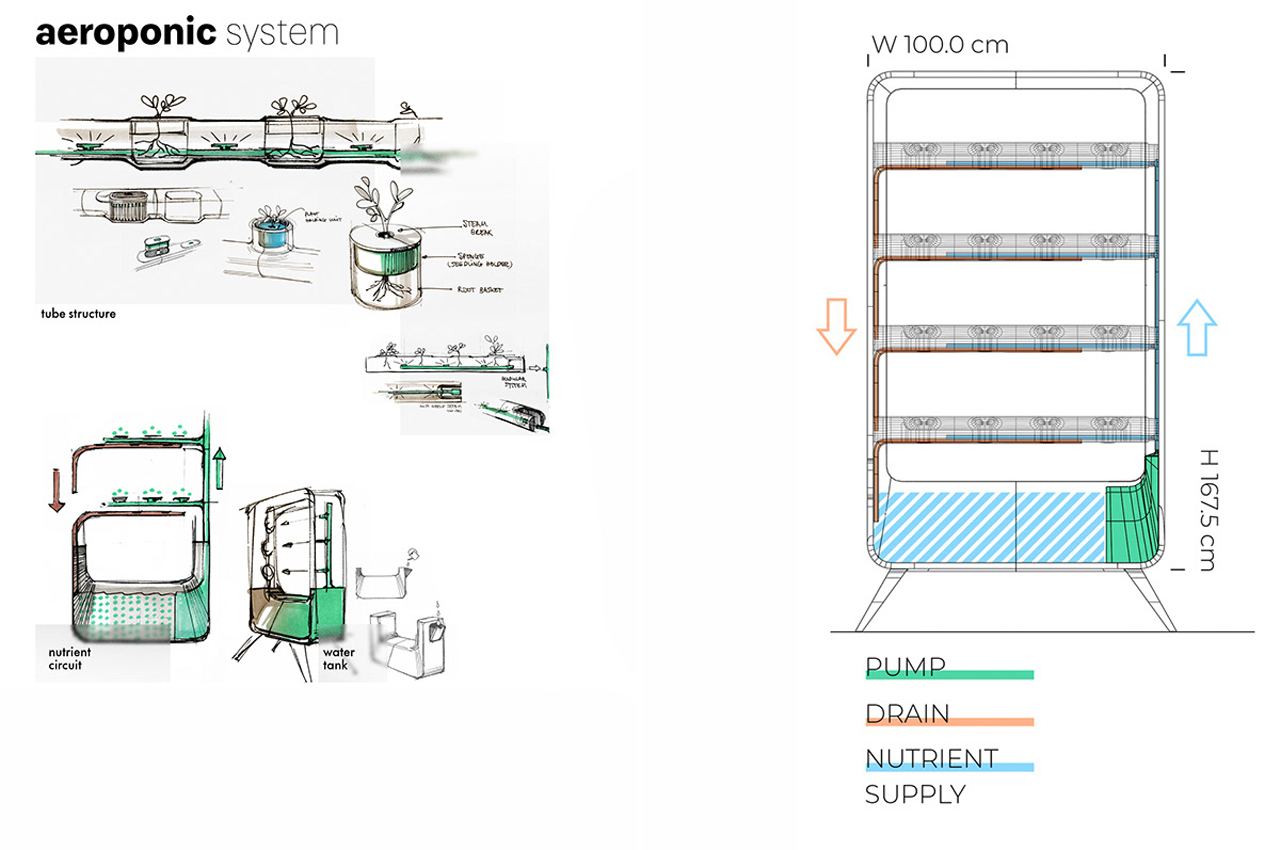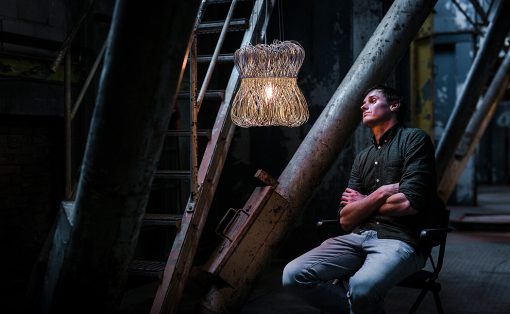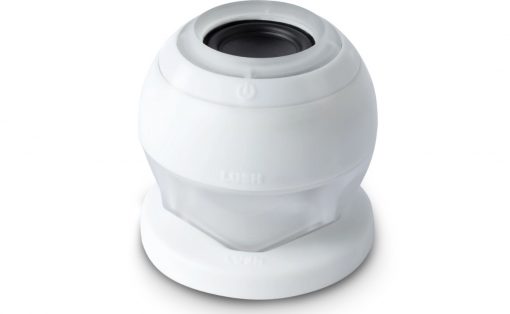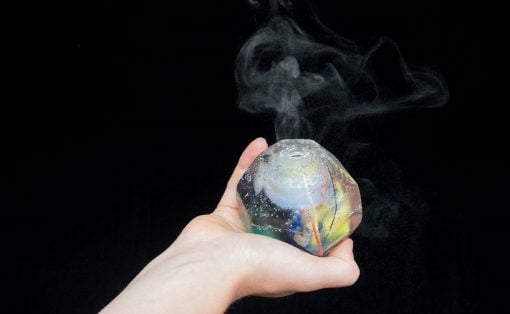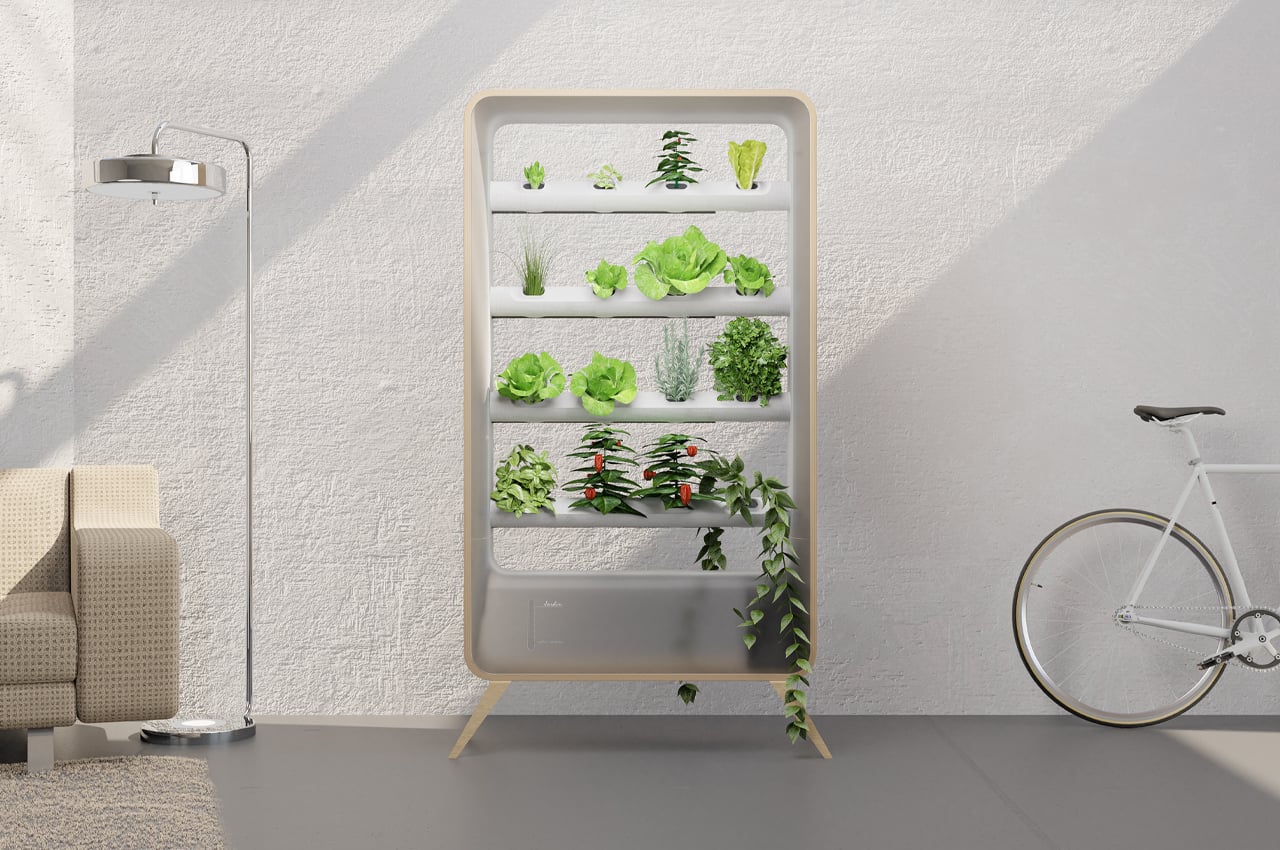
Aeroponics is an indoor garden system that requires no soil or growing medium for plant cultivation.
Indoor gardens have become the new living room staple. In recent years, stay-at-home orders prompted many of us to integrate biophilic design into our homes to bring us closer to the outdoors. On one hand, indoor gardens add a touch of greenery to our interior design. On the other, indoor gardens provide us with food and nutrients within arm’s reach. Relying on an aeroponics system to cultivate an array of different plants, Sebastian Weigand conceptualized an indoor garden to reduce food waste and rediscover the many benefits of plant cultivation.
Designer: Sebastian Weigand
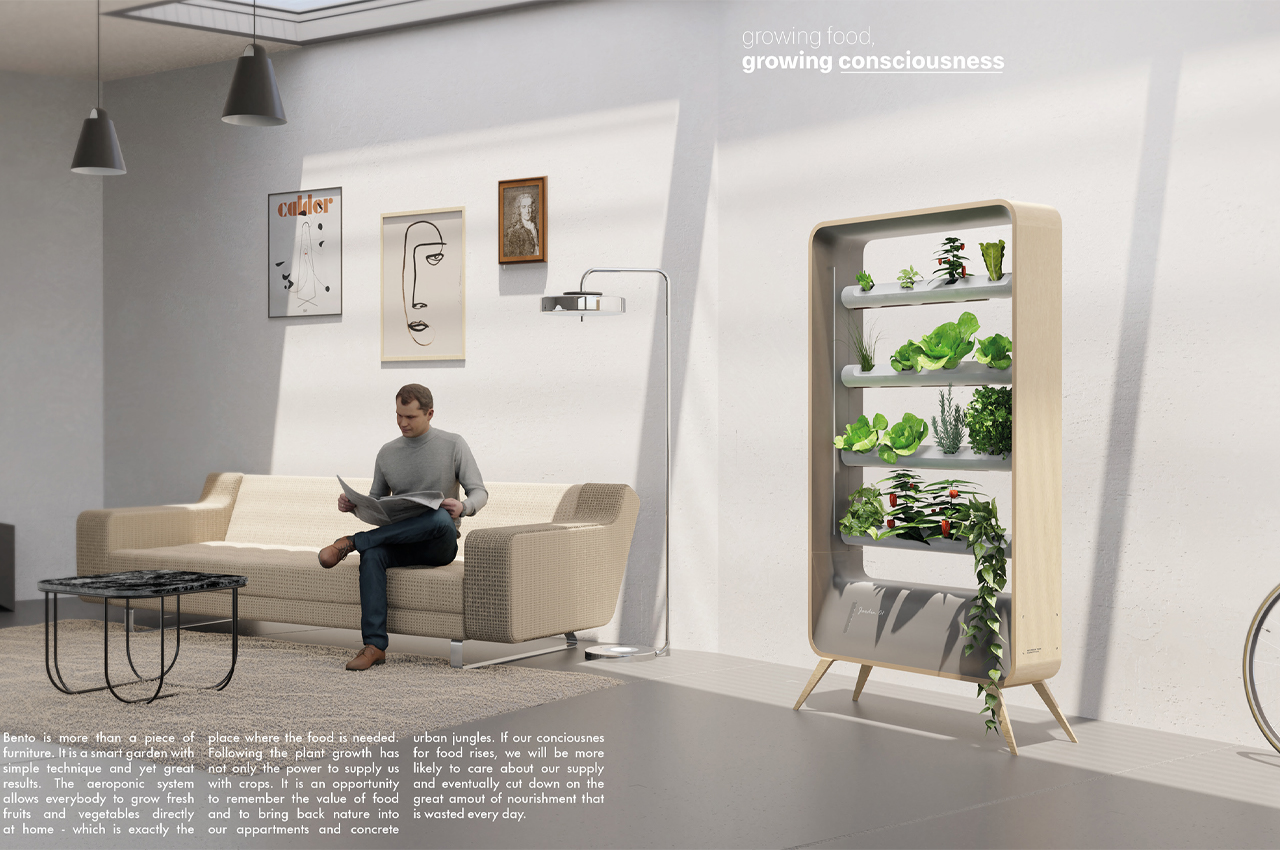
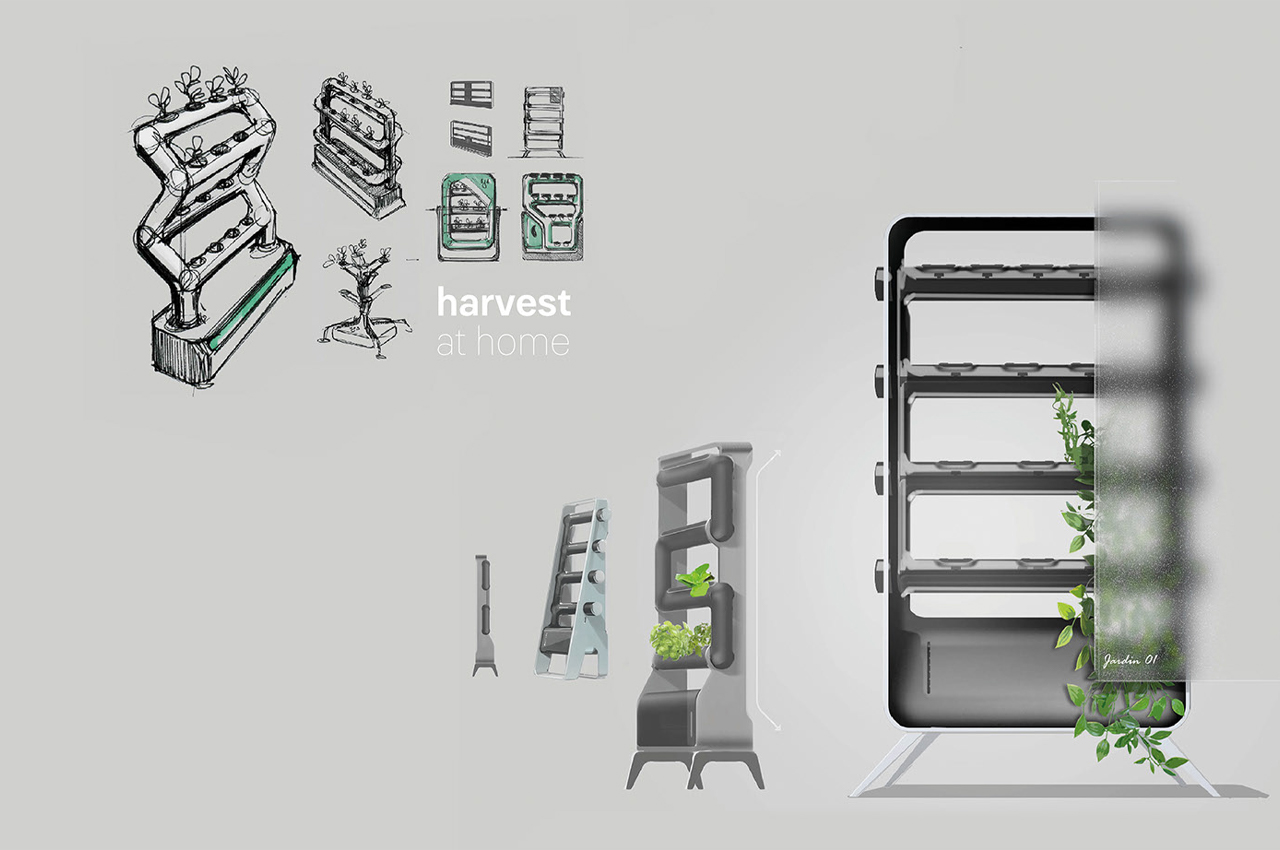
Aeroponics is a form of plant cultivation that requires no soil or growing medium. The roots of the plants in an aeroponics system are simply suspended in a dark compartment and periodically sprayed with a nutrient-rich mist that cultivates growth. Weigand notes, “Growing [plants] at home also grows consciousness. The design goal was to bring the existing aeroponic gardening system into everybody’s home in order to raise awareness of our food.”

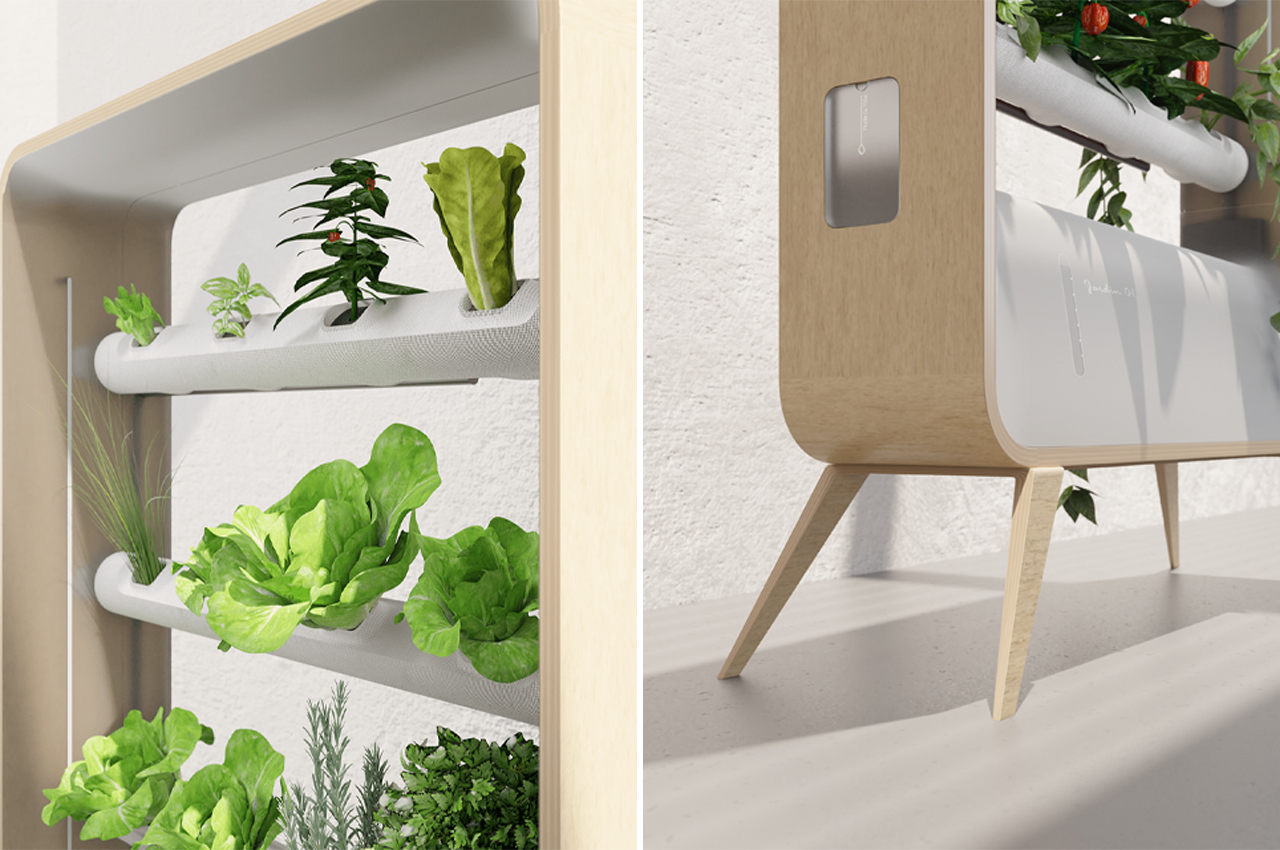
Maintaining a minimalist appeal, the Aeroponics Indoor Garden is built from a narrow steel frame and is clad in a natural wood covering. The wood covering gives the whole system a refined look that will look right at home in any space, from the living room to the kitchen. Keeping a similar appearance to that of a wooden bookshelf, four rows of planters store different plants on the Aeroponics Indoor Garden. While the overall structure maintains an elemental appearance, the system’s internal mechanisms hide all the magic.
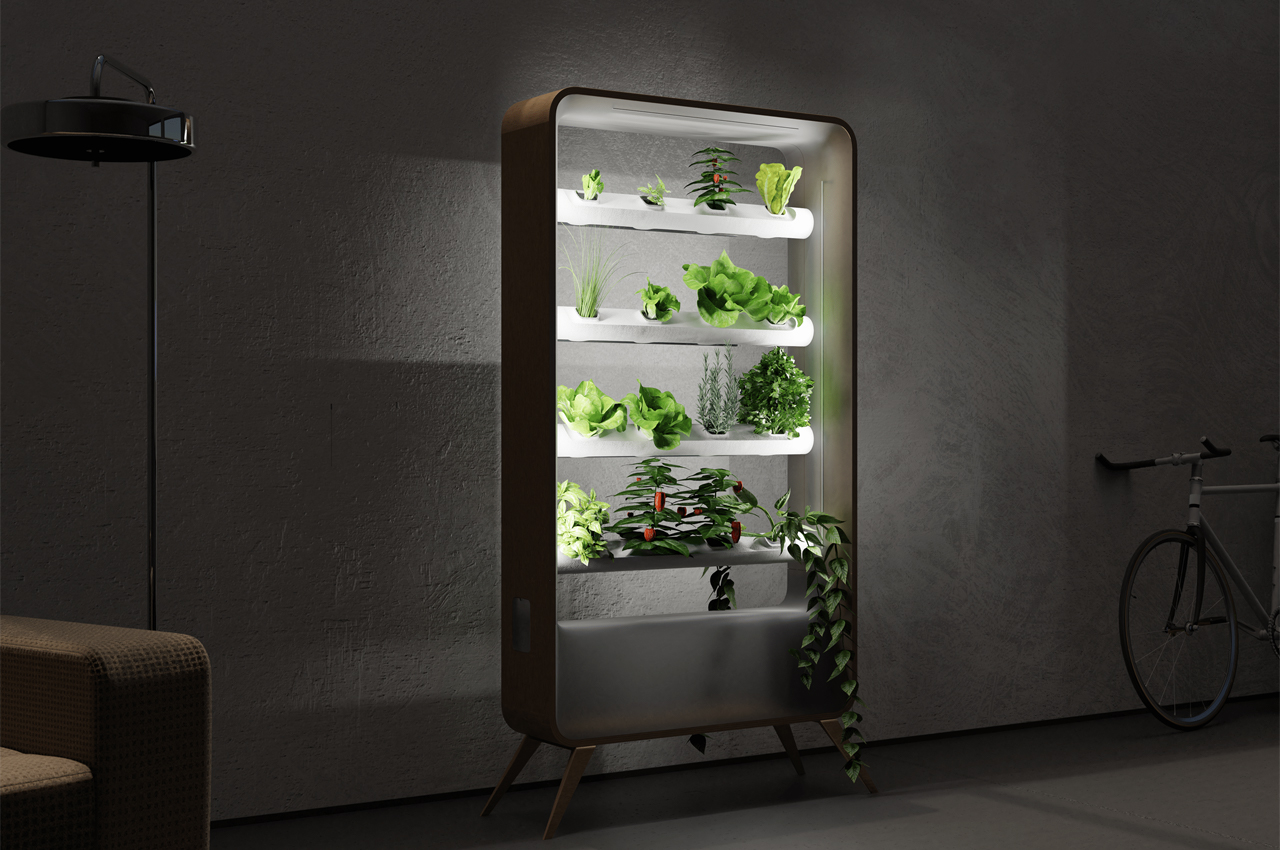
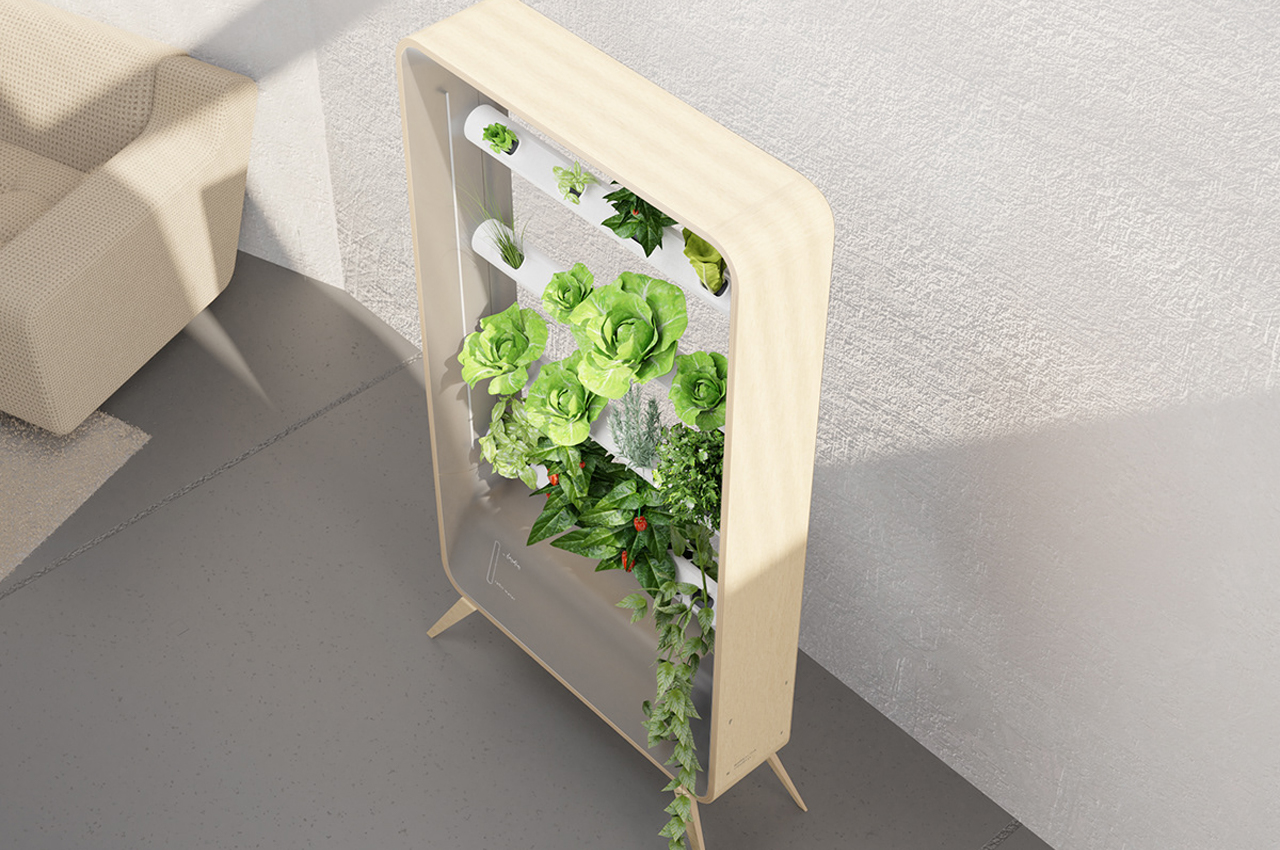
The indoor garden’s vertical build gives it a slim look, while all of the internal workings are stored in the system’s base. Just above the legs of Weigand’s Aeroponics Indoor Garden, users can find a reservoir that contains the nutrient-rich mist, which is pumped through internal valves and dispersed throughout the system to feed to different plants. When too much nutrient-rich mist is supplied, integrated drains funnel the excess liquid back into the base reservoir.
